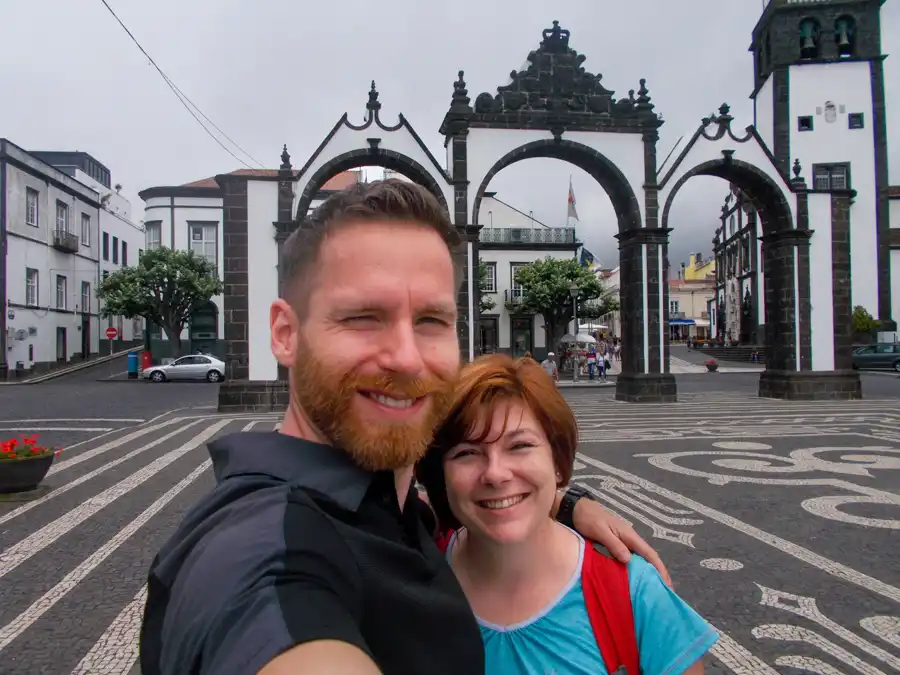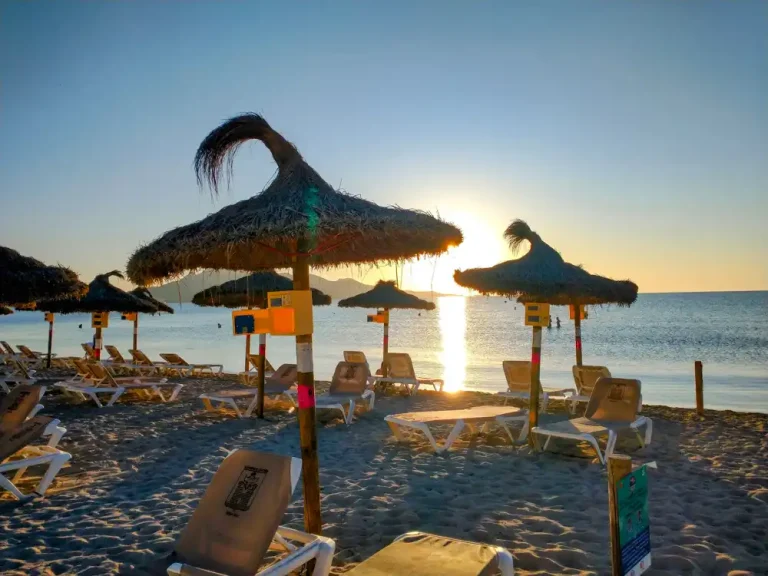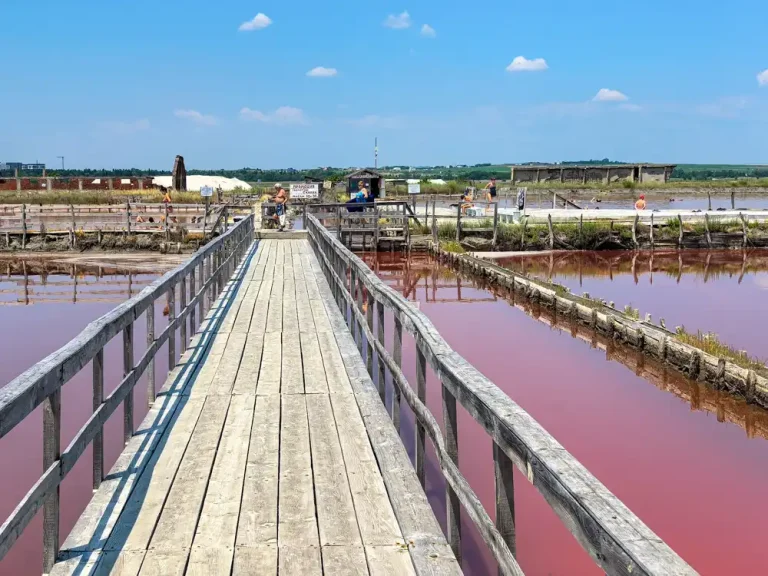Today we reserved for the beauty of Ponta Delgada and the lakes of the Sete Cidades volcano. We wake up. “I found grey hair!!! My life is over!” Hisses Ajka in front of the mirror this morning as she feels the icy hand of old age on her temple.
“You think I got those corners on my head from your thighs? It goes with age, and we’re not kids anymore.” I state.
A text message beeps at this, and my mother congratulates us on International Children’s Day. The irony of the moment instantly puts us back in the mood. Morale is boosted even more after a good breakfast. No more semi-finished products and instant porridge. Today, we breakfast like kings.

Ponta Delgada
Today we will explore the lakes in the Sete Cidades volcano on the island’s west side. Sure, an island as small as São Miguel isn’t exactly crisscrossed with traffic arteries, but the psychotic aunt in my GPS is guiding me through the various alleys and dirt roads. Luckily, a fully insured rental car is the best off-road vehicle near the company’s Felicia. So the lack of paved roads doesn’t stop us from eventually ascending to the top of the caldera from where our trail begins.
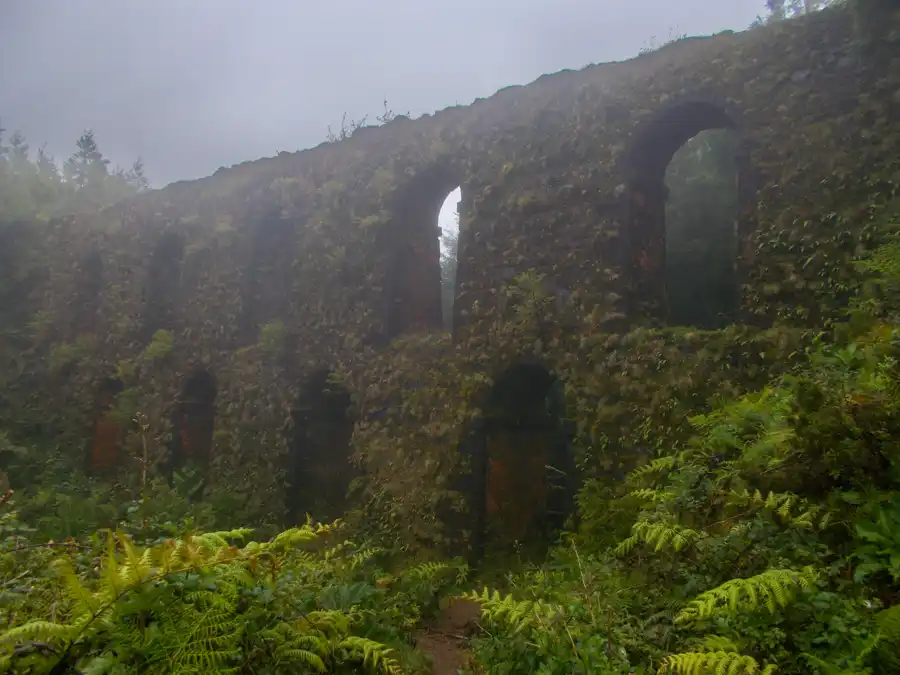
In Clouds
Unfortunately, we are in the cloud. We will not give up the “breathtaking views” as the tourist guidebook advertises them and decide to visit when the weather suits our liking.
We’re pretty happy; our feet are sore after yesterday and just beginning our stay. So we have a day of sightseeing and head to Ponta Delgada, the capital of the Azores. From the Sete Citades volcano, we cross the beautiful aqueduct several times, which used to bring water from Sete Citades right into Ponta Delgada. It is called Muro das Nove Janelas and was reconstructed in 1830. However, that was a long time ago, and today it is once again a ruin, however, a magnificent ruin that looks haunting in this cloud.
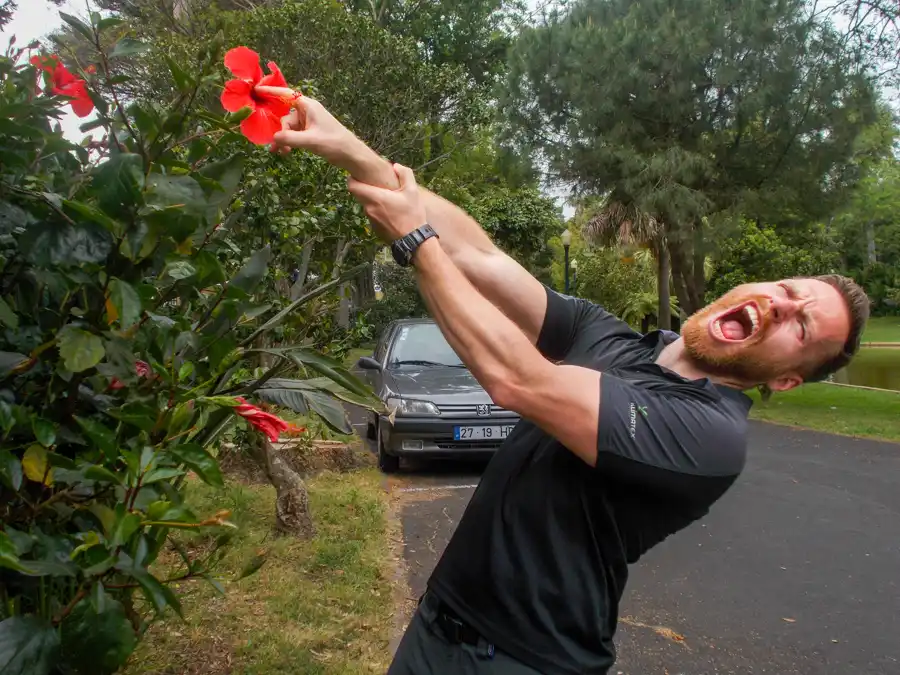
Botanical Gardens of Ponta Delgada
Arriving in Ponta Delgada, several botanical gardens and the fortress of St. Blaise are there. We enter the gardens called “Romantic Gardens A. Borges”. Their origins date back to the 19th century and include the António Borges Garden, named after the greatest Azorean garden architect, and the José do Canto Garden, with its rare collections of flowers, shrubs and trees. Each plant has a label with the name and the place where that plant is found in the world.
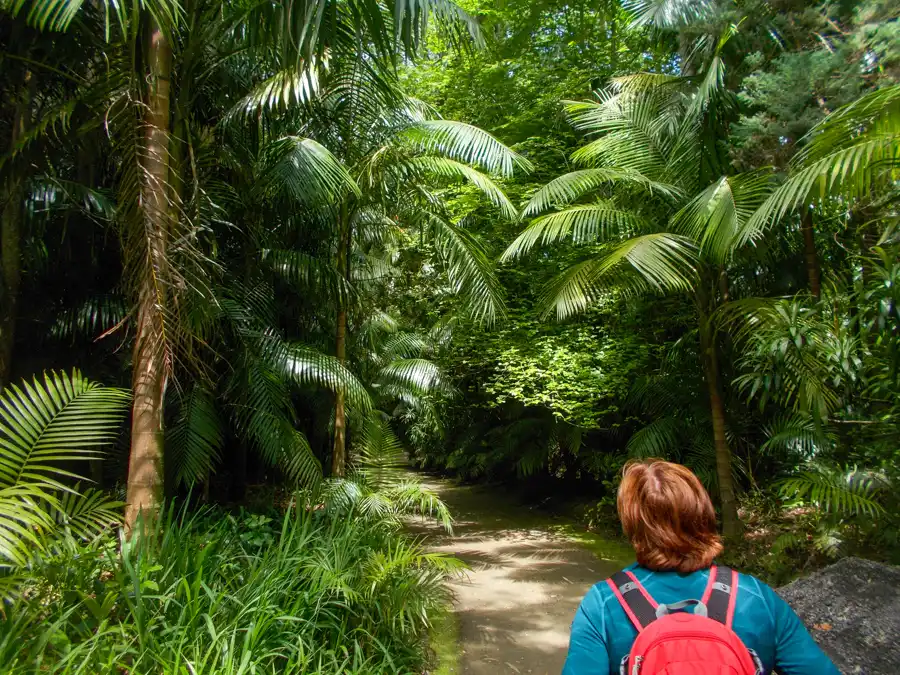
Azores weather
The Gulf Stream strongly influences the climate of the Azores. It does not freeze below 500 m above sea level; the average temperature is 21oC in summer and 14.5oC in winter. This climate suits many plants, from the Amazon rainforest to the African steppes to the cold Russian taiga. So bamboo, ficus, banana, spruce, and everything else germinate, grow, and flower side by side.

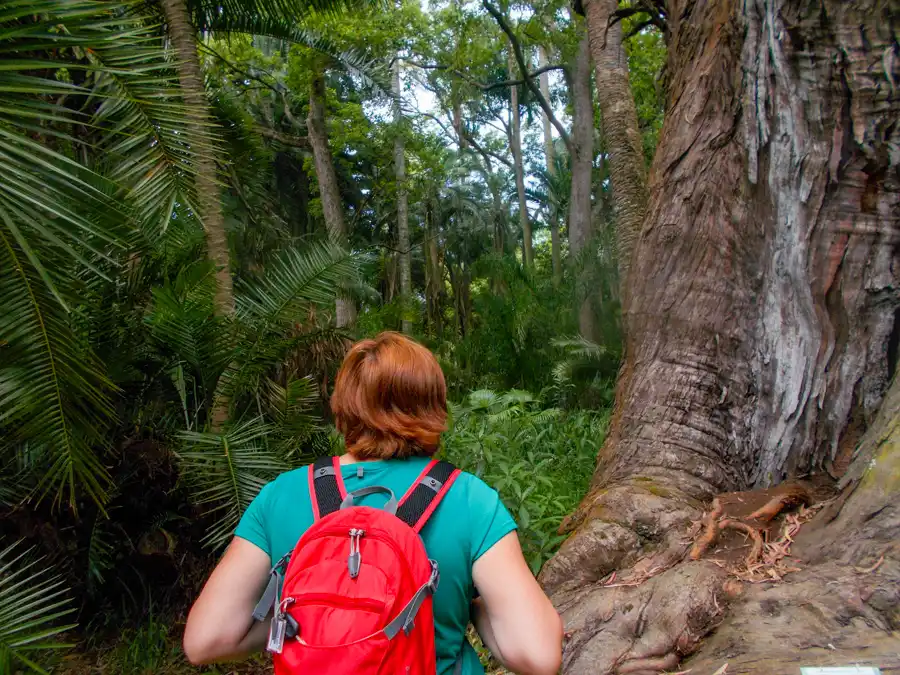
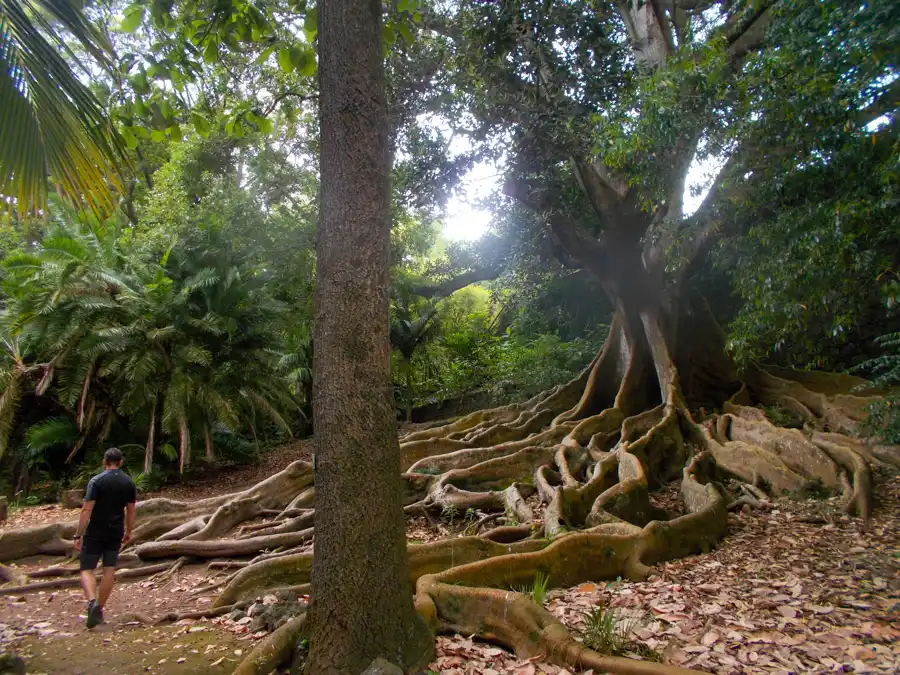
Ficus Macrophylla got us. This tree is enormous, it doesn’t know what to do anymore from the goodness, so it grows colossal root systems. It looks like the alien tree from James Cameron’s Avatar. I didn’t even know we had such a tree on Earth.
In some individuals, tropical vegetation is enough to trigger a bout of tropical madness.
Fort St. Blaise
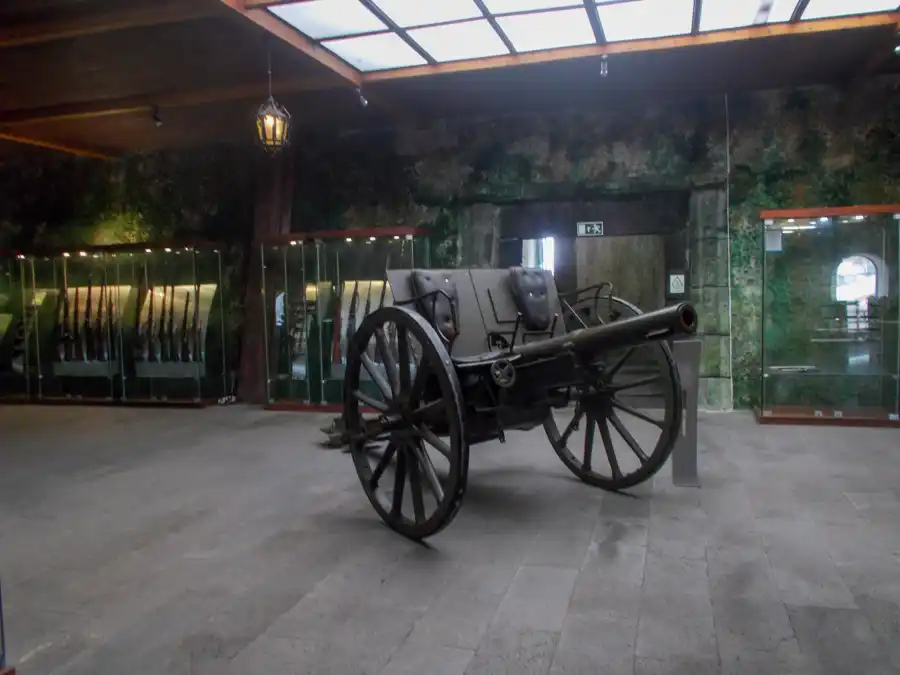
Immediately after enjoying the beauty and variety of plant species in the botanical gardens, we continue to Fort St. Blaise. Fort St. Blaise was the most important fortification of the city’s defence system. It has protected the city since the 16th century from attacks by corsairs and pirates. The Azores are of great military importance today due to their location. Still, the military base on Terceira Island, part of the 65th United States Air Force Base Group, is responsible for projecting power in the area.
St. Blaise has a museum-like character, the weapons are non-functional and only here, and there is a soldier, mostly armed with a flashlight and a radio. A rescue team could take this place in 15 minutes.


Centre of Ponta Delgada
Next, we explore the iconic 18th-century city gates, once the main entrance to the city, now part of the plaza, and the churches of Sao José, Sao Sebastiao and Sao Pedro. All are built in the late Gothic style with rich ornamental decoration. This style typical of Portugal is the so-called Manueline style.

Urban markets
We are coming to the city market. It’s bustling with activity, and the different smells tempt us to taste varieties of fruit we don’t know.
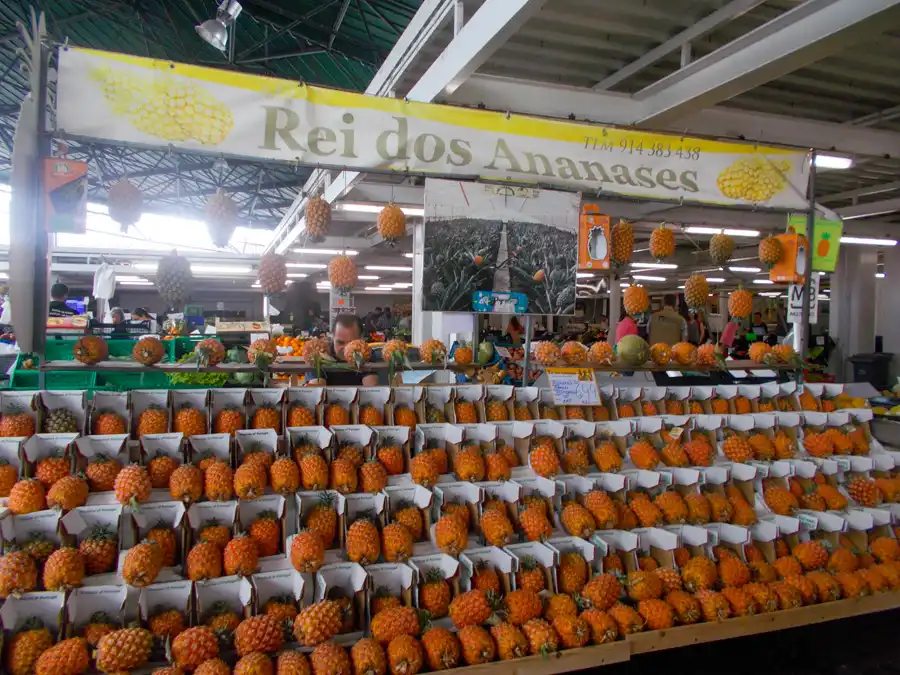
For example, bananas. Did you know that there are approximately 1,000 varieties of bananas? Do you know how many we know? I have counted them, one!!!
Until the 1960s, the only export variety was the Gros Michel (Big Mike in English, Big Marian in Slovak) banana, then the worldwide crop of Big Marianas was wiped out by the so-called Panama Disease and the current export variety Cavendish (like that sneaky cyclist, but named after the 6th Duke of Devonshire, William Cavendish) took over the wand.


So we taste bananas of different kinds, yummy. I consider the absence of several types of bananas in our shops from now on a great injustice, and I feel like writing to Matovič to do something about it (although he would probably blame it on Sulík).
Museo Carlos Machado
Next we visit a museum – Museo Carlos Machado. Founded in 1876, it opened its doors in 1888. The mission of the Museo Carlos Machado is to preserve the heritage and, through it, reveal and promote Azorean culture and identity, focusing on educational activities centred on several publications. You will find audio guides in English, French, Portuguese and Spanish.
Presidential Gardens
Our steps continue to the Presidential Gardens. Getting here is more complicated. The Palace of the Governor of the Azores, “Palácio de Sant’Ana – Presidencao do Governo”, is built in late baroque architecture. The palace and its garden are classified as an asset of public interest and a regional monument. Since 1980 it has been the seat of the Presidency of the Regional Government of the Azores.

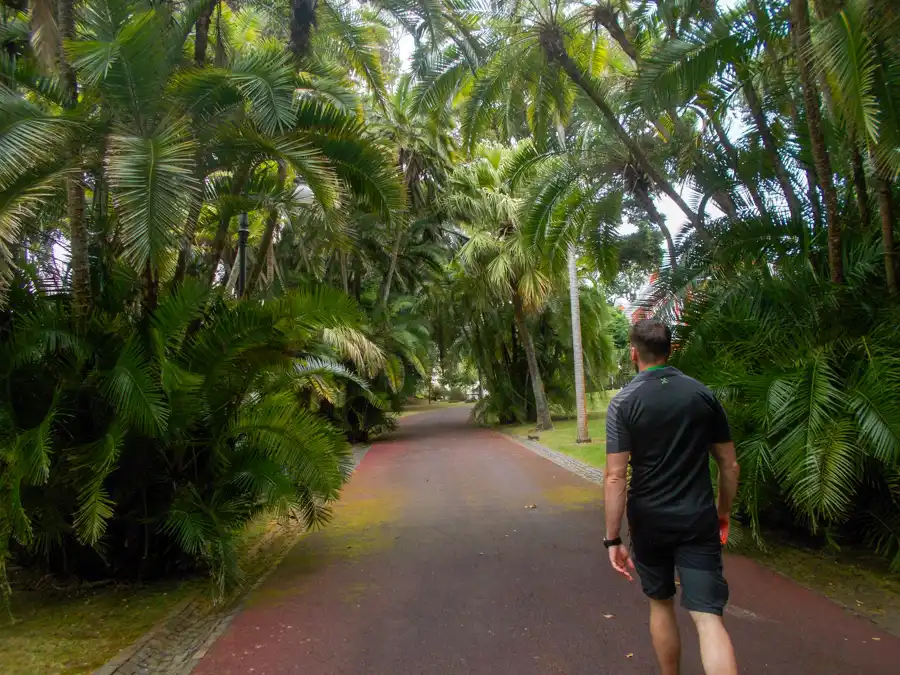

If you want to walk around here, you must register at the concierge, pay a small fee, and they will give you a card to move around the gardens. We didn’t know this, so we were detained by security. When dealing with state officials, we used the tried and true tactic: “We made ourselves nasty.” Since the security guards assessed that the terrorists would not ask to share a photo with them after being detained, they issued us cards and let us go.
Ajka with a card officially confirming her tourist status and the palace gardens
Pineapple plantation Arruda
On the outskirts of the town is the Arruda Pineapple Plantation. Here you can see how pineapples are grown for free, and then you can taste pineapple liqueur, pineapple cake, pineapple juice, pineapple mojito, pina colada and pineapple. 🙂
You’ll also find a collection of pineapple items – from glasses to lamps. You won’t find anything here that isn’t pineapple related. If you have a pineapple allergy, visiting this attraction is not recommended.
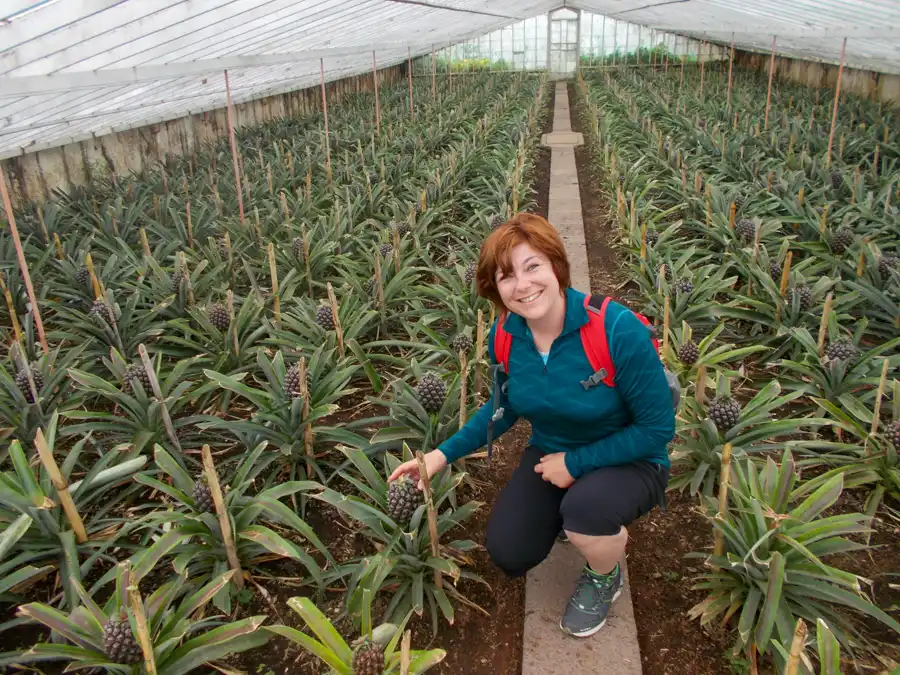

In these photos you can see the pineapple and us
Relax in the swimming pools of Caldeira Velha
We are tired of walking and need to treat ourselves to some relaxation. So we leave Ponta Delgada and head towards the thermal baths “Caldeira Velha”.
It’s three thermal natural baths, a pedestrian path and one building concentrated in an area surrounded by natural landscapes. The building adapts to the vegetation and existing stones, harmonising with the landscape. In the building, there is an exhibition that takes the visitor on a journey through the island’s volcanic eruption. It also provides general information about the Natural Park, especially in the Caldeira Velha Natural Monument area, regarding its territory of biodiversity, geodiversity, geothermal energy and thermalism.
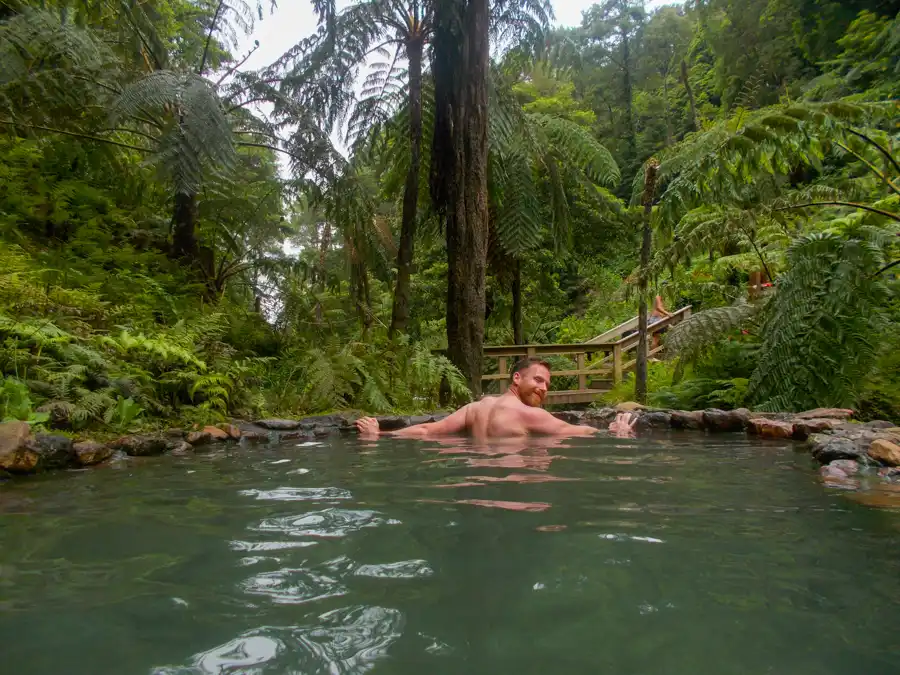
Rabo de Peixe
We dine in Rabo de Peixe, at the home-style fish restaurant O Pescador. The food choice is made by having your mum put a sign in front of you with pictures of fish, showing you what her old man has managed to catch today. I’m having the bream, Ajka the fried mackerel. What is the preferred way of preparing fish for bream? If you answered grilling, you’re right. 🙂

Ajka, in a rush of euphoria from today’s exhausting day, shows great determination and even tastes the clam, which she derogatorily called “snail” yesterday.
Mussels and Ajka. Who made the mistake of agreeing to shorten our wait for the main course by playing mind-numbingly.
Tomorrow we’ll go exploring the trail around Lagoa das Furnas.

